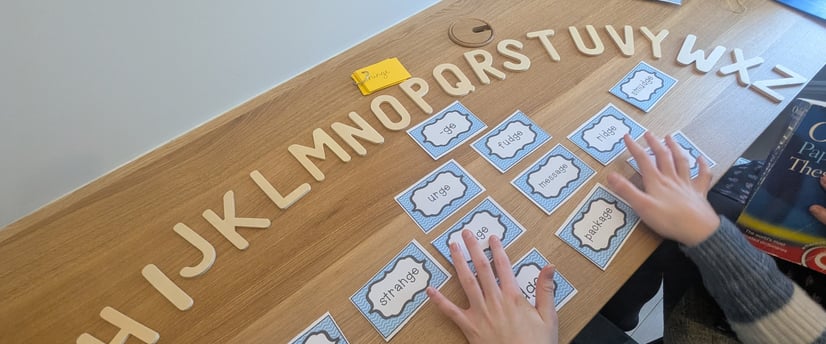Why Multi-Sensory Learning Matters for Children with Specific Literacy Difficulties
Clare Hall
4/28/20252 min read


When a child faces challenges with reading, writing, or spelling, it can sometimes feel like traditional teaching methods just aren’t enough. This is where multi-sensory learning comes in — and why it’s such a powerful approach for children with Specific Literacy Difficulties, including dyslexia.
As someone with Accredited Teacher Status from the British Dyslexia Association, I use multi-sensory methods every day because they really work. Here’s why:
What is Multi-Sensory Learning?
Multi-sensory learning simply means using more than one sense at a time to help children absorb and remember information. It involves seeing (visual), hearing (auditory), touching and moving (kinaesthetic), and sometimes even speaking (verbal).
Instead of just reading words on a page, children might say the word aloud, trace it in sand, build it with magnetic letters, and hear it in a song — all at the same time!
Why is Multi-Sensory Learning So Important?
It Builds Stronger Connections in the Brain
When children use multiple senses, they create more pathways in the brain. This strengthens memory and understanding, making it easier to recall information later.It Makes Learning More Accessible
Children with literacy difficulties often struggle to learn through sight alone. Adding touch, movement, and sound gives them more chances to succeed.It Boosts Confidence
Multi-sensory activities are often hands-on and engaging. They help children feel successful and enjoy learning — which can make a huge difference to their self-esteem.It Encourages Active Participation
Instead of passively looking at a page, children are actively doing, making, saying, and feeling. This active involvement helps them stay focused and interested.
Simple Multi-Sensory Activities You Can Try at Home
Trace and Say: Trace letters or words in sand, salt trays, or shaving foam while saying the sounds aloud.
Air Writing: Write big letters in the air with a finger while shouting out the sounds.
Build Words: Use letter tiles, magnetic letters, or scrabble tiles to physically build words.
Rhythm and Rhyme: Clap out syllables in tricky words or make up silly songs for spelling rules.
Movement Games: Jump to the correct letter on a letter mat or hop out the sounds of a word.
Multi-sensory teaching isn't just a "nice extra" — for many children with Specific Literacy Difficulties, it's essential. It gives them the tools they need to unlock their learning and reach their full potential.
Specialist tuition for children with dyslexia.
Support
CONTACT US
enquiries@specific-learning.co.uk
© 2025. All rights reserved.
